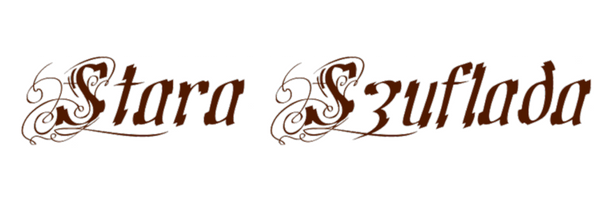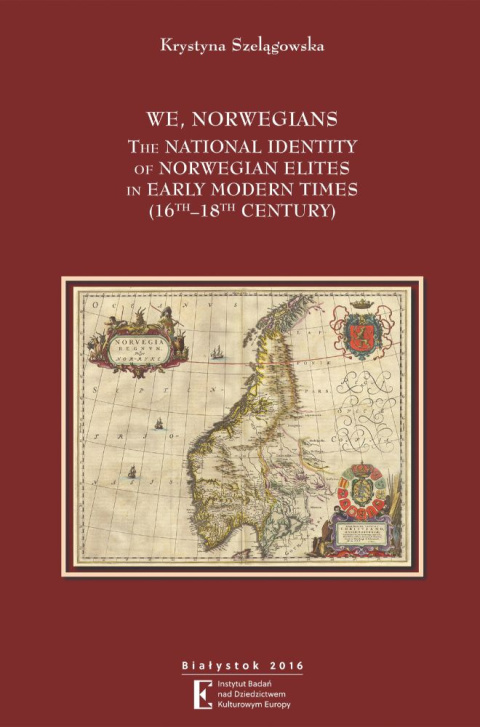-
Koszyk jest pusty
-
x

-
Koszyk jest pusty
-
x
- Kategorie
-
We, Norwegians. The national identity of Norwegian elites in early modern times (16th–18th century)


| Wysyłka w ciągu | 24 godziny |
| Cena przesyłki | 11 |
| Dostępność |
Mała ilość
|
| Kod kreskowy | |
| ISBN | 9788364103148 |
| EAN | 9788364103148 |
| Zostaw telefon |
Autorka: Krystyna Szelągowska
Rok wydania: 2016
Liczba stron: 369
Okładka: twarda
Format: 17,00 cm x 24,00 cm
Seria: Dissertationes 16
"Norwegian elites are the collective protagonist of this work. In the context of modern Norway this concept needs detailed analysis, especially that weare concerned with a non-homogeneous period. Although the 18th century isthe main focus of this work, references to the previous periods (16th and 17th centuries) are numerous and unavoidable. In the age following the year 1660,when absolutist regime was introduced in Denmark-Norway, the concept ofelites is more or less uniform – it refers mostly to officials i.e. lay officials, protestant clergy and military personnel. By its own nature the topic directs ustowards the literate elites; those who were either involved in the public debateor felt a desire to write down their experiences. These were mostly civil servants – only later, in the second half of 18th century the educated burghersstarted participating in the public dispute. It is important to say that thesewere immigrant elites, coming mostly from Denmark. But when analysing theearlier period, all this appears to be not a simple matter. First of all, it wasa unique transition period of the disappearing of the old (Norwegian) elitesand shaping new, Danish-Norwegian, ones. Secondly, their composition wassomewhat different because apart from the representatives of literate protestant clergy, it included also a few noble families and the upper stratum of theburgher’s class, who in the 16th and 17th centuries (until 1660) expressed theiridentity only in a limited way, for example through political activity. As will beshown, the Norwegian peasantry of the modern era will need to be analysedas well, which results from adopting a certain approach to identity formationof the Norwegian elites"
(from introduction)
"Norweskie elity są zbiorowym bohaterem tej pracy. W kontekście współczesnej Norwegii pojęcie to wymaga szczegółowej analizy, tym bardziej, że mamy do czynienia z okresem niejednorodnym. Choć głównym tematem tej pracy jest XVIII wiek, odniesienia do wcześniejszych okresów (XVI i XVII wiek) są liczne i nieuniknione. W epoce następującej po roku 1660, kiedy w Danii i Norwegii wprowadzono reżim absolutystyczny, pojęcie elit jest mniej więcej jednolite - odnosi się głównie do urzędników, czyli świeckich urzędników, duchowieństwa protestanckiego i personelu wojskowego. Temat sam w sobie kieruje nas w stronę piśmiennych elit; tych, którzy albo brali udział w debacie publicznej, albo mieli ochotę spisać swoje doświadczenia. Byli to w większości urzędnicy państwowi – dopiero później, w drugiej połowie XVIII wieku, wykształceni mieszczanie zaczęli brać udział w publicznym sporze. Trzeba powiedzieć, że były to elity imigranckie, wywodzące się głównie z Danii. Jednak analizując okres wcześniejszy, okazuje się, że nie jest to prosta sprawa. Przede wszystkim był to wyjątkowy okres przejściowy zanikania starych (norweskich) elit i kształtowania się nowych, duńsko-norweskich. Po drugie, ich skład był nieco odmienny, gdyż poza przedstawicielami piśmiennego duchowieństwa protestanckiego znalazło się w nim także kilka rodów szlacheckich i wyższa warstwa mieszczańska, która w XVI i XVII wieku (do 1660 r.) ograniczony sposób, na przykład poprzez działalność polityczną. Jak zostanie pokazane, analizy wymagać będzie również norweskie chłopstwo epoki nowożytnej, co wynika z przyjęcia pewnego podejścia do kształtowania tożsamości norweskich elit"
(ze wstępu)
Spis treści:
Introduction /7
Part One. The process of shaping Norwegian national identity in 16thand 17thcentury /37
Chapter One. The loss of independence of Norway at the beginning of the 16thcentury /39
Chapter Two. Norwegian society in 16thand 17thcenturie /53
Chapter Three. Danish politics towards Norway and Norwegians in 16thand 17thcenturie /67
Chapter Four. Norwegian national identity in 16 Chapter Four.thand 17thcenturie /95
Chapter Five. Norwegian peasants: memory and continuity /139
Part Two.18thcentury transformations of the national identity of the elites /157
Chapter One. Danish politics towards Norway after 1660; the changes of the elites /159
Chapter Two. The influence of Ludvig Holberg and Erik Pontoppidan on the development of the national identity in Norway /193
Chapter Three. We Norwegians, our country and nation /223
Chapter Four. Patriotic activity /245
Organizational structures /255
Scientific Whiting /259
Literature /285
The struggle for national interest: university and bank /289
Chapter Five. The structure of national identity /295
Nature /298
People /306
History /322
Conclusion /333
Bibliography of works Cited /341
Primary sources /341
Secondary sources /348
